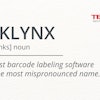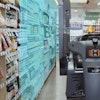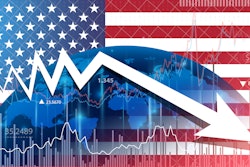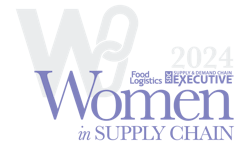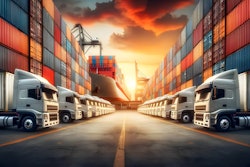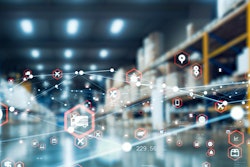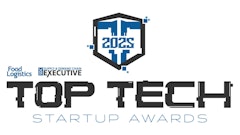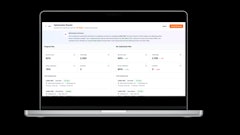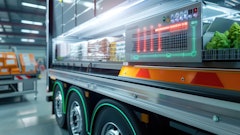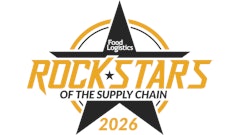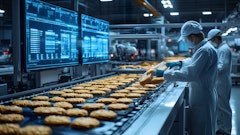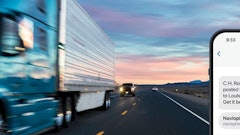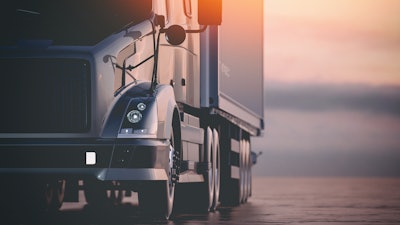
What a time to work in the supply chain industry. From port strikes and rail strikes to environmental, social, governance (ESG) regulations, electrification mandates and natural disasters shutting down major roads and ports, it’s a wonder any food and beverage moves through the cold chain.
But have no fear, it’s not all doom and gloom.
Food Logistics talks exclusively with Rishi Mehra, VP of commercial mapping and routing technology at Trimble, about nearshoring, autonomous vehicles, data analytics and supply chain disruptions.
CLICK HERE to read the full article.
Food Logistics: From your perspective, what are considered the Top 5 trends to watch in 2025? And why?
Rishi Mehra: As the year winds down, the transportation industry continues to navigate challenging market conditions that have resulted in low demand for truck load requests despite a high capacity of fleets available. The market shifts have pushed transportation companies to reassess operations, find process efficiencies and innovate for the future. The following trends will be ones to watch in 2025:
● Technology Innovation and Platform Connectivity: The next generation of TMS solutions are leveraging AI and machine learning to build systems and platforms that drive higher productivity and efficiency. A 2023 survey about what carriers were doing to “weather the storm” showed companies were (and still are) highly focused on automating manual tasks, reducing paperwork and manual documentation, optimizing load scheduling and routing systems, and streamlining other areas of their business.
● Data Analytics and AI: Data is behind all emerging technologies, with AI at the forefront. We already see AI dramatically changing the transportation industry, and the next five years will be monumental—especially when it comes to safety, operations optimization, efficiency and productivity. AI-powered video systems are already enhancing safety by detecting hazards on the road, analyzing and predicting risky driver behavior and alerting drivers to take preventive action.
● Nearshoring: Nearshoring is an emerging trend that U.S. carriers believe will have the greatest impact on freight transportation over the next three years, according to a recent Transporeon report. In 2023, Mexico surpassed China as the leading source of goods imported into the U.S., and this relationship will continue to grow as more infrastructure and warehouse space is built, and other business development is happening at the border.
● Autonomous: Human-less trucks and vehicles continue to be a hot topic, and they are already involved in the supply chain, particularly in the food service sector. Several grocers are using autonomous vehicles for both long-haul or middle-mile delivery services. We’ll continue to see more autonomous vehicle programs in the years ahead, however, regulations continue to vary greatly at state and federal levels.
● Sustainability and Electric Vehicles: New emissions standards for heavy-duty trucks are accelerating the switch to more emission-friendly vehicles, with forensic carbon accounting and measurement a potential legal necessity for shippers and carriers. Hurdles such as mileage range and charging infrastructure are among the limitations preventing fleets from greater adoption of electric vehicles.
Food Logistics: Describe some of the challenges impacting many of today’s supply chains. This can include everything from port/rail strikes and ESG regulations to adopting technologies and more.
Mehra: One major supply chain challenge that is certainly top of mind is disruption due to severe weather and natural disasters. With climate change and warmer temperatures causing larger and increasingly devastating destruction from hurricanes, floods, tornados, wildfires and other weather-related events, the impact to the supply chain causes a negative ripple effect on businesses and consumers. The increase in severe weather instances is pushing fleets to adopt new solutions that streamline maintenance and repairs with regular notifications and automated scheduling, as well as real-time weather alerts that are connected with routing and mapping updates to keep drivers moving safely and as on schedule as possible.
Another alarming challenge is the growing risk of freight fraud in the truckload sector, with CargoNet reporting a 59% increase in cargo theft in Q3 2023 compared to Q3 2022. An April 2024 survey found that 48% of respondents experienced cargo theft or freight fraud in the past year.
Inventory replacement costs for shippers and insurance costs for carriers are just two examples of the negative impacts of freight fraud. Across the industry, shippers, brokers and carriers are seeing a wide range of fraud instances.
In addition, food fraud impacts an estimated 1% of the global food industry at a cost as high as $40 billion a year, according to the Food and Drug Administration. Product safety, supplier safety and transportation safety are of the utmost importance in reducing fraud in the supply chain.
Food Logistics: Describe the State of Transportation, and how factors such as port/rail strikes, electrification, trucking wages, trucking mandates, and more will affect the State of Transportation in 2025.
Mehra: If there’s one thing that freight market data has shown over the last several years, it’s that ups and downs are the new normal in the transportation industry. The freight market has needed to adapt after the pandemic boom we experienced while everyone was staying at home.
The cyclical nature of freight markets is like the sun rising and setting. The only certainty is that consumer, manufacturing, economic, seasonal and other factors will continually impact freight volumes and capacity requirements.
For carriers dealing with the volatility of the freight market, adapting to change is the path to ongoing profitability, such as investing in innovative solutions to maximize labor productivity, gain process efficiencies and improve other operational areas.
Transportation companies are increasingly migrating their systems from on-premises to remote storage. This approach is creating efficiency to deliver higher productivity and automation, real-time insight and collaboration among users based on data collection and insights.
As noted above, the early stages of electrification and autonomous trucking are undoubtedly already starting to change and shape our industry’s future. However, state and federal regulations still need to mature to put the needed structure and guardrails around these areas for mass adoption. As the profession evolves technologically, with it may come an overhaul in the hiring and retention processes of drivers, along with better pay and benefits to match updated job duties and expectations.
Food Logistics: Let’s talk State of Software and Technology. What kinds of emerging technologies are your company/your customers/your members implementing to improve resilience, transparency and visibility?
Mehra: Within the transportation industry, Trimble is focused on creating a connected global supply chain by identifying and building solutions that enable supply chain stakeholders to collaborate effectively and efficiently, no matter what technology provider they use.
Whether it’s a driver using truck-specific navigation, back-office staff accessing real-time visibility, maintenance techs using predictive solutions or shippers sourcing freight capacity, Trimble is building connections and integrations to seamlessly – and safely – share data for the benefit of all involved.
Trimble offers SaaS, web, mobile and installed solutions that improve efficiency, promote safety, optimize utilization and enable collaboration. From planning to delivery, Trimble delivers on its promise to provide cutting edge procurement, transportation management, mapping, routing, dispatch, navigation, location, fleet management, ELD compliance and asset maintenance solutions.
At Trimble’s 2024 Insight Conference, Transporeon Visibility was announced. When in use, the solution delivers real-time visibility and accurate ETAs to in-transit shipments for all transportation types. It directly integrates with Trimble’s TMW.Suite and Innovative TMS, as well as other visibility products.
Food Logistics: Let’s talk ESG regulations. Sustainability reporting is a big thing to come in 2025. Walk us through the steps your company/your customers/your members are taking to ensure ESG compliance.
Mehra: More transportation companies these days are implementing ESG initiatives and reporting activities to do their part in being a socially responsible business. Some fleet operators are using alternative fuels, running newer, lower-emission trucks, and using new technology solutions that create better freight efficiency and energy-saving efforts.
Many trucking companies are also monitoring their social impact, which takes into account people and culture. Employee engagement initiatives and better standards for drivers, along with monitoring labor standards among suppliers, data protection and privacy, and gender and diversity, all fall under this category.
Good governance and reporting of ESG practices help fleet owners be transparent, avoid violations and do good for the industry and their employees.
Those most successful in the sector are using real-time insights, automation and innovative technology solutions to advance their capabilities and implement sustainability initiatives, but our industry still has a long way to go in developing advanced ESG strategies and reporting processes, but some are certainly leading the way for our sector.
CLICK HERE to read the full article.

